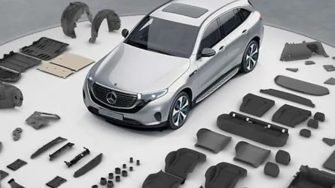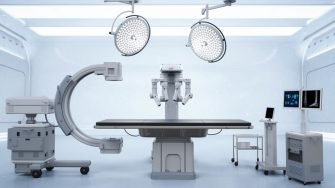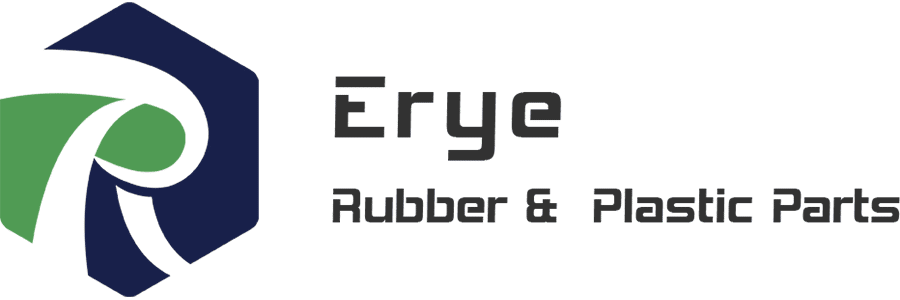Polypropylene Injection Molding
Whether you need durable components or lightweight designs, our polypropylene injection molding services deliver precision, consistency, and quality to meet your production demands.
Home | Capabilities | Polypropylene Injection Molding

Erye Offer Polypropylene Injection Molding Service to Specific to Your Needs!
Polypropylene (PP) is widely used in various industries due to its light weight, durability, and chemical resistance. We offer cost-effective and reliable PP injection molding solutions to meet your high performance and quality standards.
- Advanced Molding Capabilities: Precision molding for both simple and complex PP parts.
- Custom Material Options: Includes reinforced and impact-modified PP grades.
- In-House Tooling: Faster turnaround with optimized mold designs.
- Secondary Services: Assembly, surface finishing, and package customization.
Injection Molded Polypropylene Design Guidelines
Polypropylene is relatively easy to mold. But still requires careful consideration of its high flexibility, low density and checmical resistance. Below are key design recommendations to optimize performance and manufacturability.
| Item | Description |
|---|---|
| Wall Thickness | Maintain uniform wall thickness to prevent warping and sink marks. Typical range is 0.5 mm to 5 mm, depending on part size and function. |
| Draft Angles | Include draft angles of 1-2 degrees on vertical surfaces to ensure easy part ejection from the mold. |
| Ribs and Bosses | Design ribs with a thickness of 50-60% of the nominal wall thickness to avoid sink marks; ensure bosses are properly supported (e.g., with ribs) to maintain structural integrity. |
| Radii and Fillets | Use radii and fillets with a minimum radius of 0.5 mm to reduce stress concentrations and improve mold flow during injection process. |
| Shrinkage Considerations | Polypropylene (PP) has a relatively high shrinkage rate of 1.0% to 2.5%. To control tolerances and maintain dimensional stability, the shrinkage rate must be taken into consideration. |
| Living Hinges | PP's flexibility allows for living hinges, but the hinge thickness should be 0.25–0.5 mm for durability. |
| Stiffening Features | For large or flat parts, add ribs or other stiffening elements to prevent warping, especially given PP’s higher shrinkage tendencies. |
Key Properies of PP Molding Material
Polypropylene (PP) properties can vary significantly depending on the specific grade (homopolymer, copolymer, etc.) and any additives used. Here's a general overview of key properties with typical data.
| Property | Value/Range | Description |
|---|---|---|
| Density | 0.898 - 0.908g/cm³ | Varies slightly between homopolymer and copolymer. |
| Melting Point | Homopolymer: 160 - 165°C; Copolymer: 135 - 159°C | Copolymer has a lower melting point. |
| Tensile Strength (Yield) | 20 - 40 MPa | Range reflects variations in PP types. |
| Elongation at Break | 15 - 700% | Wide range due to different PP formulations. |
| Flexural Modulus | 1.1 - 1.6 GPa | Reflects stiffness; higher for homopolymer. |
| Water Absorption (24 hrs) | <0.01% | PP is highly hydrophobic. |
| Heat Deflection Temperature (HDT) | 50-60°C | HDT A (1.8 MPa) |
Key Considerations:
- Homopolymer vs. Copolymer:
- Homopolymer PP is generally stiffer and stronger.
- Copolymer PP offers better impact resistance, especially at low temperatures.
- Additives: Fillers like glass fibers or talc can significantly enhance PP’s mechanical properties.
- Temperature: PP’s properties can change with temperature, and it’s not well-suited for high-temperature applications
Start PP Molding Project
Get high-quality PP injection molded parts! Contact with Erye to request a quote!
Features of PP Injection Molding
Advantages
Cost and Efficiency
PP is relatively inexpensive compared to many engineering plastics, it is an economical option for mass production.
Low Density & Lightweight
One of the lowest densities among common plastics, PP molding parts are typically lightweight, reducing material weight in applications such as packaging and automobiles.
Good Electrical Insulation
Naturally provides strong resistance to electricity, making it useful for housings and electrical components.
Recyclable
Easy to recycle, which lowers material costs and it is more sustainable and cost-efficient in circular use.
Safe for Food Contact
Many PP grades are certified for direct contact with food and drink, making it common in packaging and kitchenware
Limitations
Lower Strength and Stiffness
Compared to engineering plastics like nylon or ABS, PP has relatively low mechanical strength and rigidity.
Poor Heat Resistance
Standard PP softens at relatively low temperatures (around 100–120 °C), which limits its use in high-temperature applications.
Shrinkage and Warpage
PP tends to shrink and warp more than some other plastics, which can complicate precision molding.
Poor Bonding and Painting
Its low surface energy makes it difficult to glue, paint, or print on without surface treatments.

Case Study
Case Study of PP Injection Molding Car Parts
Learn how we helped an automotive client develop a custom injection mold for a car relay box cover. From material selection to mold design, we delivered a complete solution for automotive industry!
PP Injection Molding Applications

Packaging
- Food containers
- Bottle caps and closures
- Medicine bottles
- Storage boxes and bins
- Cosmetic packaging (lids, jars)

Automotive
- Battery cases
- Interior trim parts (door panels, dashboards)
- Fluid reservoirs (washer fluid, coolant)
- Air ducts and housings

Medical
- Syringe barrels
- Specimen containers
- Medical device housings
- Pipette tips
- Diagnostic test cassettes

Industrial
- Chemical storage tanks
- Battery cases
- Industrial containers
- Pipe fittings
- Material handling trays

